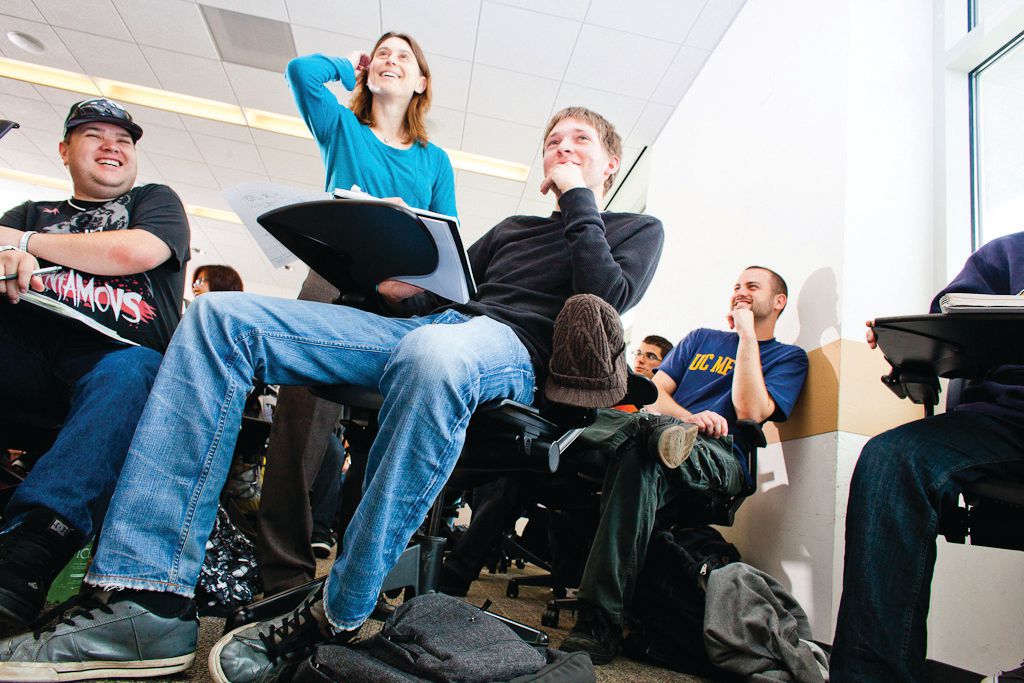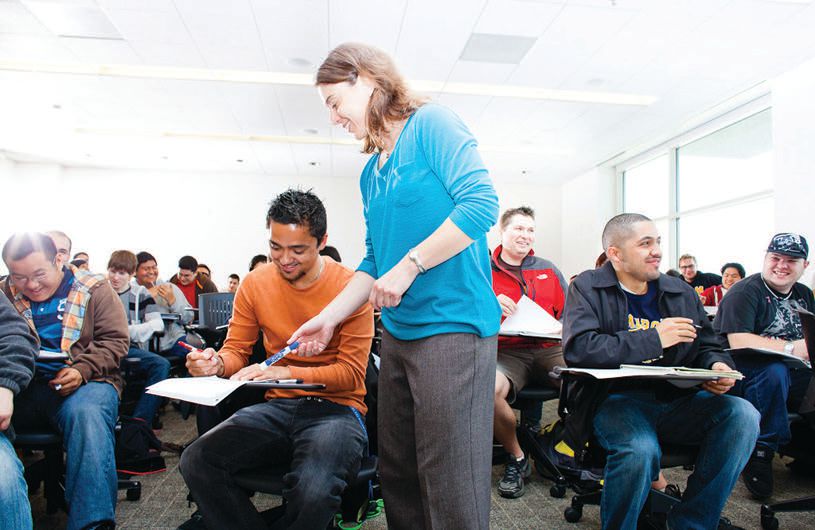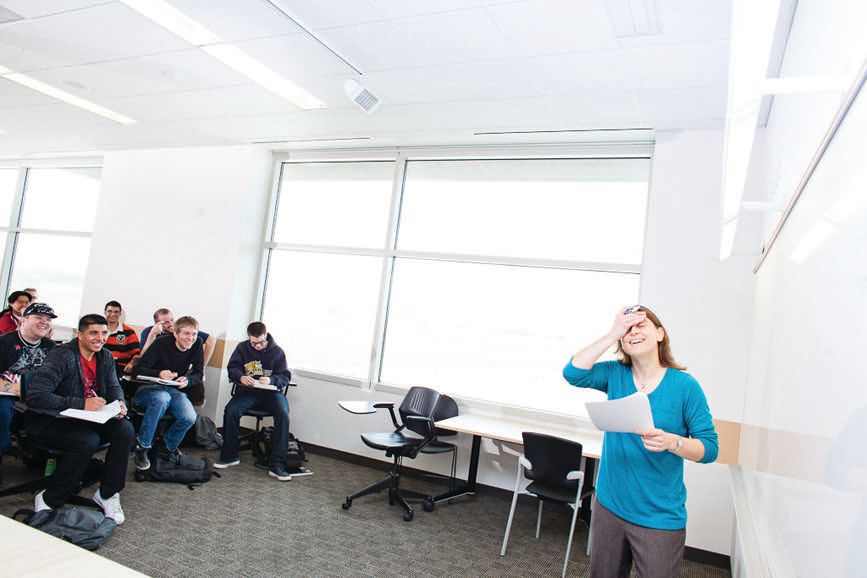20 Minutes With Dr. Ashlie Martini
Karl. M. Phipps, Managing Editor | TLT 20 Minutes June 2012
From student member to board member, this young researcher is mentoring the next generation of tribologists.
EDUCATION
• Doctorate, Mechanical Engineering – Northwestern University, Evanston, Ill., 2007
• Bachelor’s of Science, Mechanical Engineering – Northwestern University, Evanston, Ill., 1998
ACADEMIC EXPERIENCE
• Assistant Professor, Engineering, University of California-Merced, Merced, Calif., August 2011-Present
• Assistant Professor, Mechanical Engineering, Purdue University, West Lafayette, Ind., August 2008-August 2011
• Visiting Assistant Professor, Mechanical Engineering, Purdue University, West Lafayette, Ind., August 2007-July 2008
• Graduate Research Assistant, Northwestern University, Evanston, Ill., August 2002-July 2007
NON-ACADEMIC EXPERIENCE
• Information Technology Consultant, Deloitte Consulting, Chicago, Ill., June 1998-July 2002
STLE ACTIVITIES
• Board of Directors (May 2011-Present)
• Nanotribology Technical Committee, Vice Chair (May 2010-Present)
• ASME/STLE International Joint Tribology Conference Planning Committee (October 2008-Present)
• Young Tribologist Committee, Founder and Chair (2008-2011)

Dr. Ashlie Martini
TLT: How were you first introduced to tribology?
Martini: My first exposure to tribology was limited until I returned to graduate school at Northwestern to work on my doctorate in mechanical engineering. I had been out of academics for several years and was exploring which areas would be best to continue my education. I chose tribology because my early impression of it (which was later proven correct) was one of a versatile field with many opportunities for involvement in diverse and stimulating research.
Now that I am teaching at a university, I want to ensure that students become aware of tribology long before they enter graduate school. Introducing tribology as its own undergraduate class is not usually feasible, given the already high number of basic engineering courses required for students to receive their degree. However, there are opportunities within those basic courses to introduce students to topics in tribology (for example, discussing viscosity in fluid dynamics or bearings in component design, among others). One of my goals as a college instructor is to make sure that the students in my classes (and others whenever possible) know generally what tribology is and are aware of it as a career path.
TLT: How did you get involved with STLE?
Martini: My first exposure to STLE was as a student attendee at the annual meeting. I started by just attending and then moved on to presenting posters and giving oral presentations. Now I try to be involved in as many aspects of the organization as possible. I really believe that STLE is going in all the right directions, and I want to be a part of the society’s continued growth and success.
TLT: As the founder and chair of STLE’s Young Tribologist Committee, can you tell us how it got started?
Martini: The Young Tribologist Committee was formed after I approached Robert Bruce, STLE’s 2008-2009 president, about developing STLE programs that focused on students and early-career tribologists.
After further discussions, I was tasked by STLE to help organize the YTC. At that time, although people were aware of the importance of developing the next generation of tribologists, there was no specific group targeted to this demographic of the society’s membership.
A few years later, I’m thrilled that STLE now has developed many programs and activities specifically for students, including offering awards to selected, qualified applicants to attend STLE-sponsored meetings and conferences, the student poster competitions, as well as organizing professional networking events at the annual meeting. In addition, it’s great to see the student poster abstracts published in TLT, too.
Most important, all of these activities couldn’t be done without the tremendous support and efforts by the society’s headquarters staff.
TLT: What is a typical work-day like for you and what do you enjoy most?
Martini: What I do varies quite a bit from day-to-day. Things on my task list include (1.) planning and teaching undergraduate courses, (2.) mentoring my graduate students in their research, (3.) writing grant proposals, (4.) writing journal papers, (5.) preparing presentations and, of course, contributing to STLE.
What I am doing on a given day usually consists of some combination of those things that are most pressing. But I really love most aspects of my job. Generally speaking, I would say I get the most gratification out of sharing knowledge, be it through directly teaching, mentoring or participating in various STLE activities. That sounds somewhat cliché, but honestly there is nothing better.
 “As a college instructor, my goal is to make students know what tribology is and are aware of it as a career path.”
TLT: Why do you study nanotribology?
“As a college instructor, my goal is to make students know what tribology is and are aware of it as a career path.”
TLT: Why do you study nanotribology?
Martini: Although tribology is complex on any length scale, for many macroscopic problems, the field has developed to the point where an engineer can make reliable predictions about behavior of a standard tribological interface. However, many of the design tools available to that engineer are empirical and often limited to a relatively small set of conditions.
My primary motivation for studying nanotribology is as a means of developing a better understanding of the physical mechanisms underlying observed phenomena. By focusing on very small length and time scales, I hope to be able to hone in on more fundamental and general principles of rolling and sliding. The goal is to be able to say, “We may not have worked with this
particular tribological interface before, but we know which principles apply and are well positioned to take advantage of it for design.”
TLT: Why do you use molecular dynamics simulations to study nanotribology?
Martini: Molecular dynamics is a numerical technique, like many others that tribologists might use such as finite element analysis, except that it captures things that happen on very small scales. Nanotribology is the study of nanoscale interface phenomena, so it is important to use a modeling tool that can capture what is happening on those length scales. With molecular dynamics simulation, we model how atoms and molecules move. We set up a model based on what we know about those molecules and use the simulation to predict how the system will evolve over time.
There are two important roles these simulations play that complement experimental measurements: (1.) They help explain experimentally observed behaviors and (2.) They make predictions about what might happen under circumstances that either can’t be or haven’t yet been measured. For example, one can measure the sliding friction between two materials separated by a nanoscale gap and characterize how that friction changes with conditions such as load or speed. The role of a model, in that case, could be to explain what the atoms and molecules of the surfaces and the lubricant are doing that causes variations in friction. The experimental techniques available to study nanotribology are truly amazing, but their reach can be extended significantly by a modeling effort that helps explain what’s going on inside the interface.

 Ashlie Martini, assistant professor of engineering at the University of California-Merced, first joined STLE as a student member giving poster presentations and papers at the annual meeting
Ashlie Martini, assistant professor of engineering at the University of California-Merced, first joined STLE as a student member giving poster presentations and papers at the annual meeting.
TLT: Mechanical engineers can rely upon a variety of proven models for machine design and control. Do you think tribologists will ever develop a similar set of tools for lubrication formulation and tribosystem design?
Martini: I certainly hope so! That is the goal that we are all working toward. Tribology is such a complicated combination of different engineering disciplines. Developing models that are useful as predictive design tools is no easy task. However, even in the relatively short time I have been in the field, I have seen significant growth in collaboration between tribologists with different educational backgrounds.
I really believe a multidisciplinary approach is the key to development of useful design tools. There are breakthroughs that can be made through collaboration between a mechanical engineer and a chemist that might not even have been considered by either of them individually. Tribology is a field where important expertise may be tucked away where we don’t think to look for it, and bringing together those insights from different fields is a challenge.
But in the end, it will leave us with a better fundamental understanding of the science and a set of practical design tools usable in a wider array of applications.
You can reach Ashlie Martini at amartini@ucmerced.edu.